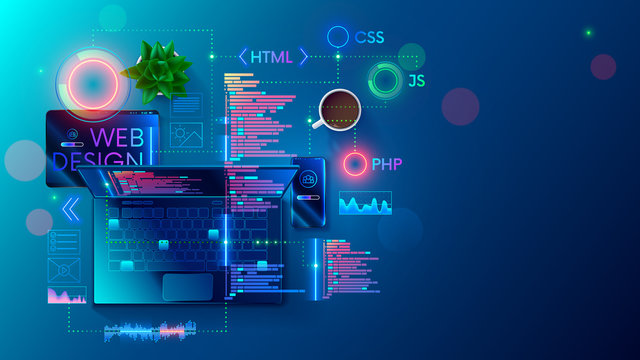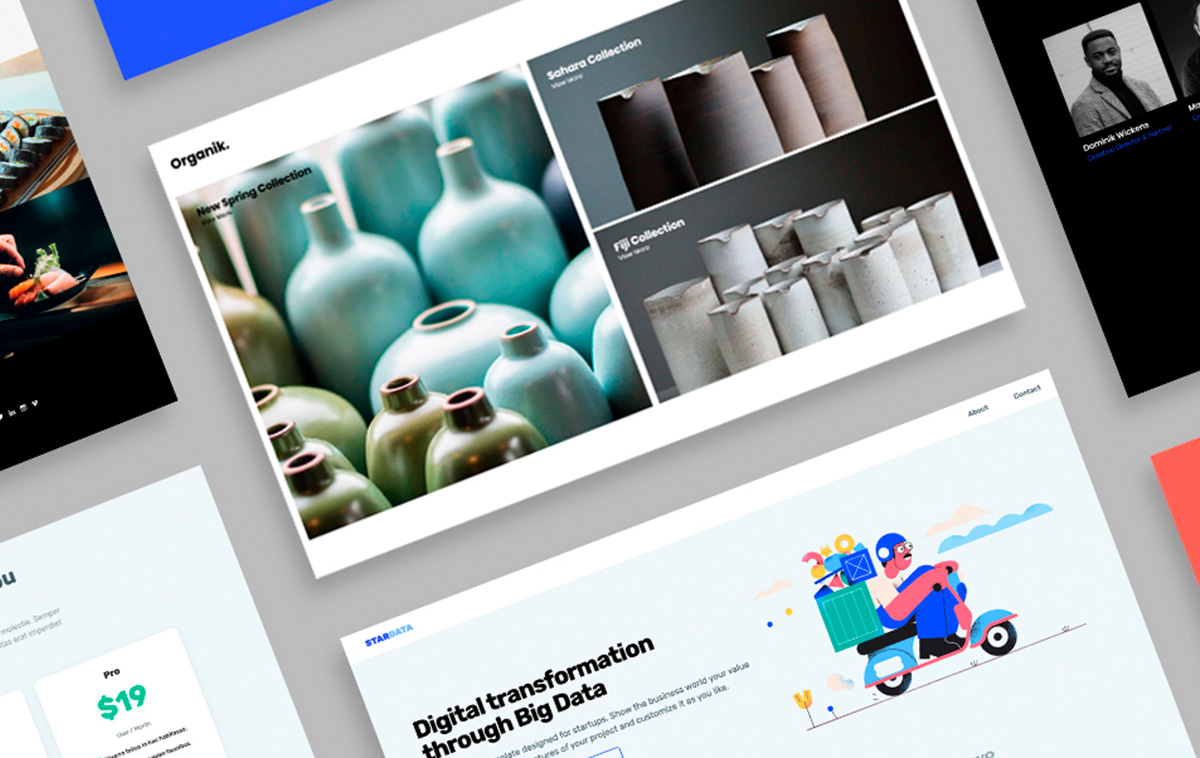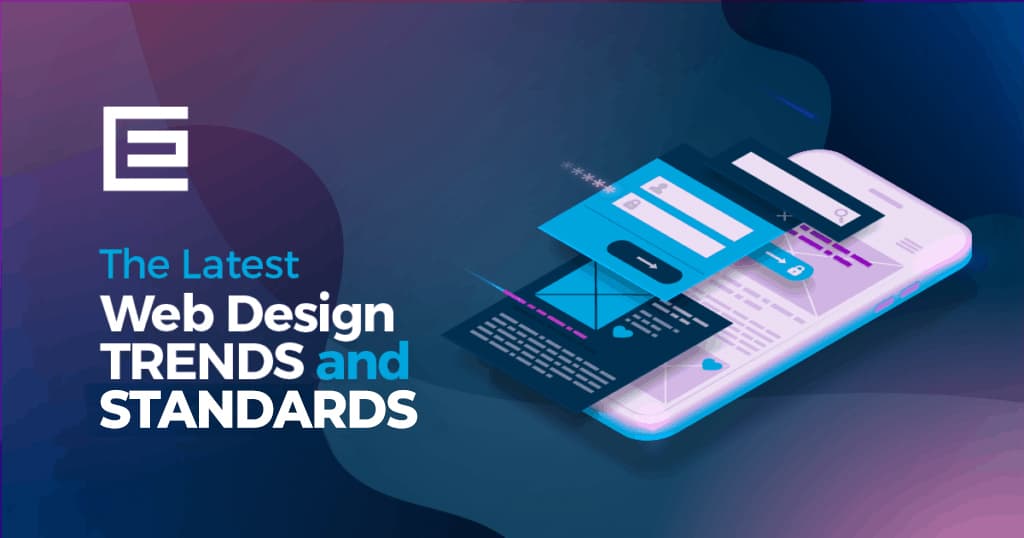Customized Aligned Position Web Design: Unique Web Designs That Reflect Your Brand’s Identity
The Very Best Kinds Of Web Layout to Enhance Customer Experience and Engagement
In the ever-evolving landscape of digital interaction, the efficiency of Web style significantly affects individual experience and engagement. Numerous design techniques, such as minimal, responsive, and interactive layouts, each deal unique benefits that can provide to diverse individual needs. Recognizing which sorts of Web style ideal serve these purposes can be essential for businesses aiming to improve consumer satisfaction and retention. However, the concern continues to be: which design aspects genuinely reverberate with individuals and foster meaningful interaction? The exploration of these principles exposes essential understandings that may redefine your technique to Web design.
Minimalist Website Design
As digital landscapes become increasingly cluttered, minimalist Web layout has actually become a powerful method to improving user experience. This design philosophy focuses on simpleness, focusing on vital aspects while getting rid of unnecessary diversions. By making use of enough white area, simple navigation, and a minimal color palette, minimal style promotes clarity and routes user attention to key web content.
The core principle of minimalist website design is to produce a seamless communication for individuals. By decreasing cognitive lots, individuals can promptly realize info without feeling bewildered. This direct strategy not just boosts usability yet likewise encourages involvement, as site visitors are more probable to check out a website that is very easy and visually attractive to navigate.
In addition, minimalist style typically stresses typography and images, utilizing these aspects tactically to share messages successfully. In significance, minimalist Web design is not just a pattern; it is a thoughtful technique that acknowledges the value of user-centered style.
Responsive Website Design
In today's varied digital atmosphere, responsive Web design has become vital for developing a smooth customer experience across a multitude of tools. As customers accessibility web sites on mobile phones, desktops, laptops, and tablet computers, the capability of a web site to adjust its design and content to various screen sizes and resolutions is vital.
Responsive Web style utilizes flexible grids, images, and CSS media inquiries to make sure that Web content exists ideally, no matter of the device made use of. This technique not just enhances the aesthetic allure of an internet site yet likewise substantially improves use. Individuals are most likely to involve with a website that uses a constant experience, as it removes the irritation of having to focus or scroll exceedingly.
Moreover, internet search engine, consisting of Google, focus on mobile-friendly web sites in search rankings. By taking on receptive layout, organizations can improve their visibility and get to a broader target market. This technique likewise simplifies website maintenance, as a solitary version of the site can accommodate all tools, minimizing the need for numerous versions. In summary, receptive website design is a fundamental method that improves individual experience, interaction, and general contentment.
Interactive Website Design
Receptive Web style lays the foundation for boosting customer experience, yet interactive website design takes this a step additionally by engaging users in a more dynamic method - Aligned Position Web Design. By including aspects such as animations, clickable prototypes, and real-time feedback, interactive website design mesmerizes customers, drawing them right into a richer surfing experience
This approach not only promotes engagement yet additionally motivates customers to check out material actively as opposed to passively consuming it. Techniques such as gamification, where users make rewards for finishing jobs, can dramatically enhance the time invested on a website and boost overall satisfaction. Interactive features can simplify complicated info, making it much more digestible and enjoyable.

Integrating interactive layout aspects can additionally lead to greater conversion rates, as individuals are more probable to involve with a website that actively involves them. Aligned Position Web Design. Eventually, interactive Web design transforms customer experiences right into memorable journeys, making sure that site visitors return time and again
Flat Style
Identified by its minimalistic approach, flat design emphasizes simplicity and functionality, stripping away unneeded elements and focusing on vital functions. This style approach focuses on usability, guaranteeing that users can navigate interfaces with ease and efficiency. By employing a tidy visual, level style gets rid of the clutter frequently found in extra luxuriant designs, consequently improving individual focus on content and performance.
The trademark of flat design lies in its usage of strong Home Page colors, simple typography, and geometric forms. These aspects contribute to an aesthetically enticing interface that is both modern and friendly. Furthermore, flat design cultivates a read this sense of clarity, permitting individuals to discern essential activities and info without interruption.
In addition, flat layout is especially effective in receptive Web layout, as its simplicity equates well across numerous gadgets and screen dimensions. The absence of detailed structures and slopes reduces filling times, which is important for maintaining customer engagement. As electronic landscapes proceed to develop, level design continues to be a relevant selection for creating user-friendly internet sites that improve total experience. By focusing on crucial functions, level design not only fulfills customer requirements but likewise urges seamless communication, making it a vital part of effective Web layout techniques.
Adaptive Web Style
Flexible website design tailors the user experience by creating numerous dealt with layouts tailored to different screen sizes and devices. Unlike responsive style, which fluidly changes a single design, adaptive style utilizes unique designs for details breakpoints, ensuring optimal presentation on various systems. This strategy permits designers to concentrate on the unique characteristics of each device, enhancing use by delivering precisely what users need based upon their context.
Among the key benefits of adaptive website design is its ability to enhance tons times and efficiency. By serving tailored content and images that fit the customer's device, sites can reduce data use and enhance loading speeds. This is particularly advantageous for individuals with slower connections or minimal information plans.

Furthermore, flexible design assists in a more controlled and regular branding experience. Since designers develop numerous layouts, they can make sure that the aesthetic components line up with the brand name's identity across different systems - Aligned Position Web Design. This causes a natural individual experience, enhancing engagement and promoting individual retention
Verdict
To conclude, the combination of minimalist, receptive, and interactive Web layout concepts considerably improves individual experience and involvement. Minimal design cultivates quality and emphasis, while receptive layout ensures adaptability throughout numerous devices, promoting accessibility. Interactive design captivates users through dynamic aspects, motivating expedition and personalization. Collectively, these design approaches add to the creation of user-friendly environments that not only improve complete satisfaction however likewise drive higher conversion rates, underscoring their vital significance in contemporary website design approaches.

Minimalist style promotes clearness and emphasis, while receptive style makes sure adaptability across different gadgets, promoting ease of access. Collectively, these style approaches contribute to the production of straightforward settings that not just boost contentment yet likewise Clicking Here drive greater conversion rates, emphasizing their essential importance in modern Web style techniques.